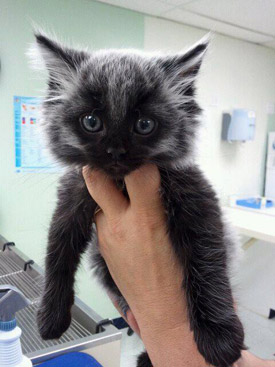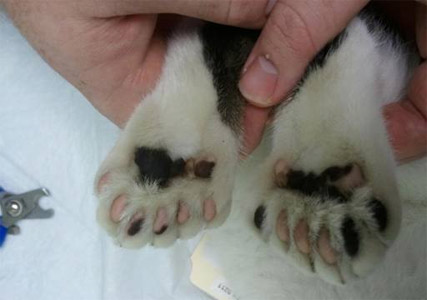Declawing or Onychectomy
 Steel Valley Spay Neuter Clinic offers declawing. We only do front paw declaws. We do offer four paw declaws, however we require a medical excuse from a human medical doctor for people who have medical reasons their cat must be declawed.
Steel Valley Spay Neuter Clinic offers declawing. We only do front paw declaws. We do offer four paw declaws, however we require a medical excuse from a human medical doctor for people who have medical reasons their cat must be declawed.
We prefer cats be 8 weeks to 1 year for declaws. We really don’t like doing older or obese cats. It is a much more difficult surgery and recovery time for them. Generally, we recommend older or obese cats are declawed at one of the wonderful veterinary clinics in our area that offer laser surgery. Again if medically necessary or human or the pet, we will consider it on a case by case basis.
I would rather see cat declawed and the cat be kept in a home than relinquished to a shelter, turned outdoors or euthanized.
There are a couple of good reasons to declaw. Medically, sometimes you have to remove a claw if the claw is damaged beyond repair or if it has a tumor. Sometimes it's also trauma to the owners. There are people whose immune systems are suppressed, diabetics, cancer patients, or the elderly on blood thinners who can't be exposed to the bacteria on a cat's claws nor being scratched. But the majority of declawings are due to social issues, where cats are being destructive and tearing up furniture, household items, other pets or owners. There are also apartments, condos or other rental type situations where landlords require cats to be declawed and remain inside pets. It is a personal decision for the cat owner. We help make decisions on what is best for the cat.
What are the positions of the American Veterinary Medical Association and the American Association of Feline Practitioners on declawing?
They both say about the same thing, which is while it's not considered medically necessary for the cat, it can be considered appropriate for cats that otherwise would be given up or for whose owners are immunocompromised or diabetic. There are alternatives to declawing, and I think everybody, including veterinarians, look at declawing as a last resort. But if it keeps the owners from giving up their cats, euthanizing them, or making them outside cats, or keeps a cat in a home, we support this idea.
All declaws are kept overnight, and are given pain medications at surgery, and to go home. All cats receive a long acting antibiotic called Convenia at surgery. All cats are sent home with a starter bag of 5lb bag of Yesterdays News.
Four paw declaws are kept at least 2 nights at the clinic.
What is the actual procedure involved in declawing a cat?
There are several different techniques, but they all involve one thing. You have to remove the claw, and you have to remove the little piece of bone that the claw grows from. If you don't, the claw will try to grow back. The less you remove, the better, and that's where the differences in techniques come in. Each veterinarian has their own techniques that they are comfortable with; basically you cut a straight line through the joint between that little piece of bone and the next piece of bone, which is much bigger. When you do that, right underneath that is the pad, and care is taken not to damage the pad. So it's like cutting the tip of your finger off.
With cosmetic declawing, you use a tiny curved blade to go in and dissect out the claw and the tiny piece of bone. The pad is intact; all the soft tissue is there. So the cat is walking comfortably very quickly because its pads are fine. When the pads are cut in half, the cat can't walk on them without discomfort. That's what cats put their weight on. And they can't walk on them comfortably for weeks. Most of the pain comes from the trauma to the soft tissue. We do a modified version of the cosmetic declaw taking great care to not damage the pad but remove the claw. We stitch the paws closed and the skin is sealed with skin adhesive. The paws are wrapped. Cats are given pain medication and antibiotics. We keep the cats overnight at the clinic.
Cats that are declawed are sent home with specific instructions. The hardest part is keeping the litter box ultra clean post-surgical to prevent infection or litter becoming packed up in toes. A declaw can be done at the same time as a spay or neuter procedure. In fact we prefer that so the cat only has to undergo anesthesia once. We also find the younger they are around 8-12 weeks the better they do and recover quick!
Polydactyl cats or many toed cats:

